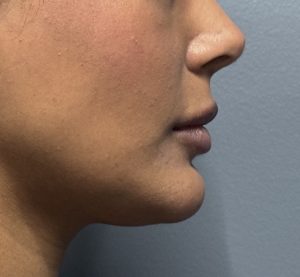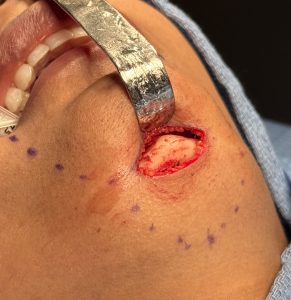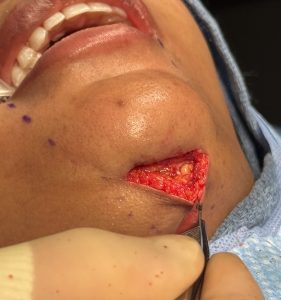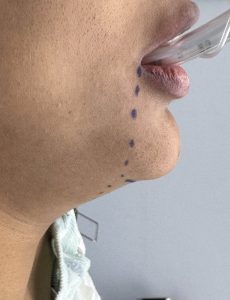Background: In female chin augmentation, whether it is done by implant or a bony advancement, consideration must be given to avoiding an aesthetic over correction. The traditional cephalometric measurements that indicate the ideal position of the chin does not really apply to most women. What matters aesthetically is not what the bone or soft tissue landmarks indicate but what the patient prefers. This is better determined by computer imaging of the patient’s pictures. (morphing different chin positions) Since chin augmentation is about numbers (millimeters of projection) a good guideline is whatever number is chosen don’t hesitate to back off 1 or 2mms. Many more women have sought revision for too much as opposed to too little.
When the chin augmentation is too much, and an implant was used, this is a relatively easy fix and there is only one option. But when it is done by a sliding genioplasty it poses more challenges and one has different options. A subtotal sliding genioplasty reversal is the obvious option but some patients may not want to go through the trauma of the intraoral approach and bone cutting again. The alternative is an external submental approach with bone burring and excision of any residual soft tissue chin pad. One consideration between these two options is how much reduction of the advancement is needed. For the sake of a few millimeters of setback redoing the osteotomy may seem ‘excessive’ and the submental approach involves less trauma and recovery.
One unique adverse event from a sliding geniopalsty advancement is the creation of hyperdynamic chin pad ptosis. This can occur for two main reasons. First a fleshy chin pad may have pre-existed and the advanced bone has pushed it forward making it more prone to being pulled down with smiling. Secondly excessive soft tissue degloving off of the front of the bone may have been done for the osteotomy and plate fixation and, if the advancement was only a moderate amount, the lack of soft tissue reattachment to the bone afterwards makes it prone to hyperdnamic and even non-dynamic chin pad ptosis. Chin pad ptosis can be treated by intraoral resuspension but that is not always reliable. A submental chin pad excision and tuck is the definitive treatment for any form of chin pad ptosis.
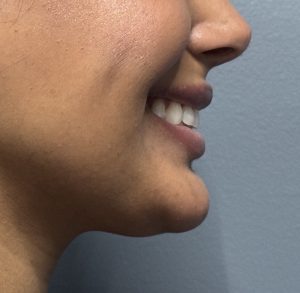
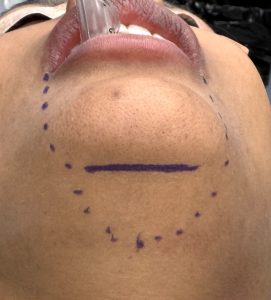
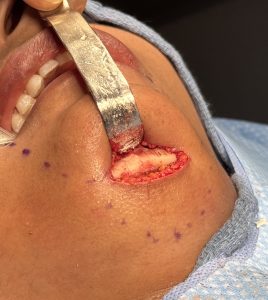
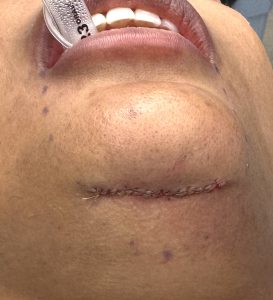
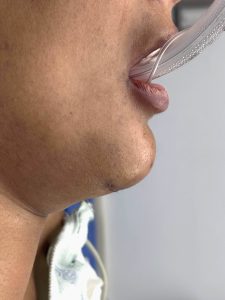
Key Points
1) In females it is not uncommon to have an over advanced sliding genioplasty that the patient never can adjust to the new look.
2) A sliding genioplasty can cause hyperdynamic chin pad ptosis if it existed previously, excessive tissue stripping is done from the end of the bone and/or the chin has been rotated upward.
3) An over projected chin with hyperdynamic chin pad ptosis can be effectively treated with submental chin reduction techniques.
Dr. Barry Eppley
World-Renowned Plastic Surgeon




